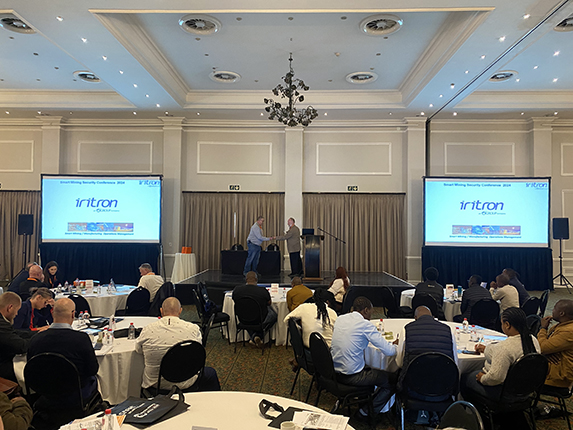As the mining industry faces increasing pressure to enhance efficiency, safety and sustainability, adopting advanced digital technologies is no longer optional – it's imperative, explained Neels van der Walt, Iritron’s head of department sales and business development.

Adopting smart mining tools and supply chain digitisation can help companies monitor asset conditions, detect anomalies, and predict failures. This will protect assets' longevity and enhance their efficiency, Van der Walt noted when speaking at the recent SMART Mining Security Conference held in Johannesburg.
“Enabling real-time asset monitoring is expensive, which has slowed the adoption of these solutions. However, if companies leverage the power of Industrial Internet of Things (IIoT) technologies, they can proactively monitor the condition of their valuable assets, even in remote areas,” said Van der Walt.
There are multiple benefits of online condition-based monitoring by leveraging IIOT technology. “In our experience, we have seen the prediction of equipment failure, which has led to avoiding unplanned breakdowns and downtime.”
Van der Walt added that this also enables longer service intervals by moving from time-based to usage-based scheduled maintenance, while companies can also save energy by monitoring equipment health, including power consumption and detecting power consumption anomalies.
One tool that is driving digital supply chain transformation is Message Queuing Telemetry Transport (MQTT), a lightweight, secure messaging protocol that is changing how mining operations manage data and communications across their value chains.
One of the standout features of MQTT, Van der Walt highlighted, is its ability to handle vast amounts of data efficiently. “MQTT was designed for low-bandwidth and high latency networks allowing a single server to process and transmit one million messages in a second with a millisecond level of latency.”
At the centre of the solution is an industrial information platform that can receive data from multiple remote edge instances, making it available to multiple applications and users. “This capability is crucial for mining operations that rely on timely data for monitoring equipment health, optimising processes, and ensuring safety,” he explained.
Expanding on the safety aspects, Van der Walt noted that an MQTT system offers robust security features that protect sensitive operational data. “We have seen some instances this year where cybersecurity threats have interrupted operations. Sibanye-Stillwater was under pressure in July when a cyberattack impacted its global IT systems, delaying its interim results by two weeks.
“Another large outage that caught our attention was the CrowdStrike IT outage, also in July,” he said, adding that MQTT does not have any open inbound ports that are required on the plant side if the requirement is to only publish data.
Also reducing vulnerability to external attacks, is the fact that MQTT has multiple edge instances connecting to single or multiple brokers allowing for zoning, segregation and secure conduits based on IEC 62443 standards architecture.
“Lastly, all transmitted data is encrypted, with user and password authentication being a requirement. It’s no surprise then that we are seeing more and more software Original Equipment Manufacturers (OEM) enabling MQTT on their technology and that the usage is expanding rapidly in the industry.
“Embracing technologies like MQTT will be essential for staying competitive in a rapidly evolving landscape,” Van der Walt concluded.